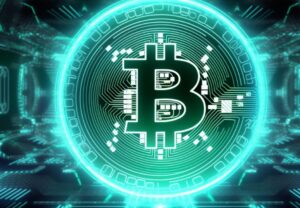Benefits of Bringing Real-World Assets to the Blockchain
3 min readTable of Contents
Bringing real-world assets into the blockchain will make them trustless, open, transparent, and permissionless allowing anyone to have exposure to financial equities, commodities, market indices, corporate assets, equity assets, and physical assets on-chain. Horizon Protocol aims to make this integration smooth by helping in the creation of synthetic assets that represent the real economy. This article aims to look at the benefits of bringing real-world assets into the blockchain. Blockchain technology will realize trillions of dollars in valuation through asset tokenization.
On-Chain exposure to Real-world Assets
Horizon Protocol offers an ecosystem where users, traders, and investors are able to seamlessly bypass current barriers to entry in traditional financial markets and have the ability to trade and invest in cryptocurrency and real-world assets on the same platform using synthetic on-chain assets. These offerings are dependent on oracles linked to various markets where these assets trade on. The power unlocked by Oracles connecting these various asset classes’ price feeds to the blockchain enables Horizon Protocol to provide an alternative to the multi-trillion dollar valuation of the traditional derivatives market, on the blockchain.
Enhancing Liquidity for Traditionally Illiquid Assets
Tokenizing real-world assets has the potential to unlock the high value of highly illiquid assets such as fine art. Theoretically, low liquid assets usually yield high returns over a long period which is, in part, due to their scarcity. However, these assets face a significant disadvantage due to the lack of an available market of buyers.
As a result, the art business and other forms of low liquid assets are characterized by volumes of intermediaries acting as collection points. These could be an art dealer, auction house, or art gallery. The resulting limitation is relatively high transaction costs in an industry that would have otherwise been cheap and convenient to operate.
Bringing such assets to the blockchain will eliminate the problem of transactional drawbacks. Besides, DeFi platforms can unlock the liquidity of such an asset by representing it as a fraction that can be distributed across millions of fractional owners.
These fractions can then be listed on decentralized exchanges, thereby expanding the network of buyers and preserving an asset’s premium liquidity.
Accessibility
There are considerable financial and regulatory limitations against the majority of investors when reaching for high upside assets such as collectible sports cars, multi-owned real estate, or the financing of big-budget films. All of these assets are known to achieve high ROI within a comparative amount of time.
Bringing such assets to the blockchain essentially pools in a group of investors willing to purchase or fund the asset. Such a model seems more like crowdfunding. However, the participants do reap financial rewards from their investments. As a result, tokenization could open up investment in assets to a much wider audience thanks to reduced minimum investment amounts and periods.
Transparency
Newbie investors or any established investor will admit they suffered from misinformation while starting.
There is a complete shortage of reliable information regarding how to own and benefit from high-value assets, in addition to other essential data such as the sale history, ownership history, returns, and metrics needed by investors to vouch for the quality of an asset. An investor needs to first purchase an asset before personally evaluating its credibility.
Recording these assets on the blockchain (or tokenizing) can grant asset tracking and auditing capabilities to any interested parties, regardless of their respective demographics. An investor will access the ownership history, historic performance, return on investments to past owners, and the associated dividends.
Tokenizing could also surge the valuation of certain assets such as when a pool of celebrities stake the ownership of an art collectible.
The ability to track such assets on a public blockchain also reduces security risks, lack of trust, incidents of fraud, and impersonification.
Verdict: Horizon Protocol as the standard for asset tokenization
When blockchains first appeared, they lacked an inherent feature for linking them to external assets. With more research into blockchains, decentralization, and financial ecosystems, researchers have come up with unique and innovative ways to bridge the gap between decentralized finance and real-world assets. Horizon Protocol is a robust platform for deploying on-chain synthetic assets that represent the real-world economy.






